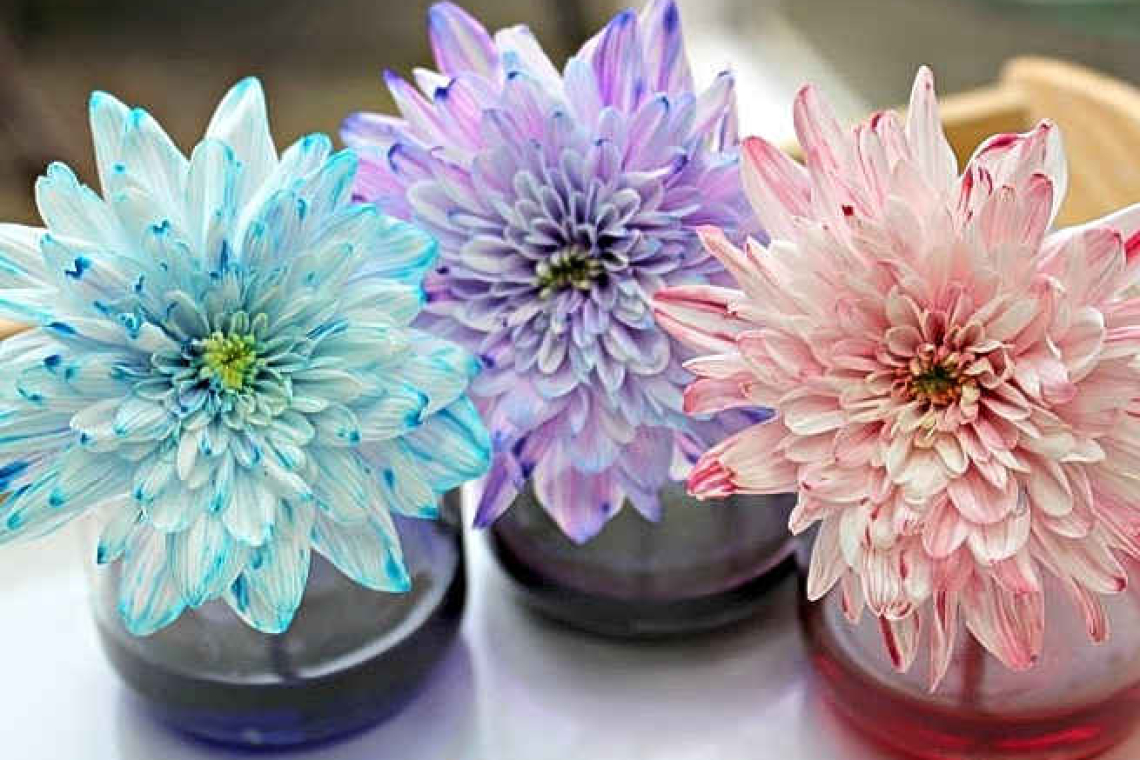We all know that plants need water. In this experiment, you’ll not just make something cute, you’ll be able to see a little more about the life of plants – how they “drink” water. We’ll use coloured water, put some flowers in them, and see how the colour spreads.
Water is taken up through the stem, which has tiny tubes inside of it, and then spread to the flowers and leaves. As water evaporates from a plant over time, it pulls up more water (from the soil, or vase) through its stem. The liquid is moved by “capillary action”, which is the ability of a liquid to flow into narrow spaces without the help of any outside force (such as gravity).
You can do this with a few flowers with jars of water with different colours, or just one. You can also experiment with different kinds of flowers, whichever white (or light coloured) flowers you can find. Of course, the same process is happening with coloured flowers, but we can see much more by using white flowers. If you get to use different flowers, you might also be able to note a difference in how quickly they take in water.
Adult supervision required; let an adult handle the scissors.
You’ll need
- White flowers
- Transparent jars/containers/bottles (you can reuse any old food jar, as long as it’s narrow enough for the flower to stand up in) –one for each flower/colour.
- Spoon for mixing
- Scissors
- Food colouring
- Water
- Optional: timer (this can be the timer on a smartphone)
Instructions
- Put a few drops of food colouring into some glasses/ containers of water, and mix. If you’re doing this experiment with multiple jars and flowers, fill each jar with a different colour.
- Trim the stems of the flowers under running water. Cut them at an angle (this is better than cutting them straight across).
- Place the flowers into the jars.
- Now it’s a matter of waiting, as the flowers take up the liquid. Leave them on the table and check in after half an hour, an hour, and 1.5 hours. Use a timer to remind you, if you like. There should be a noticeable change after about an hour. You can check again after a while to see if there is more difference. The length of time needed depends somewhat on the type of flower.







